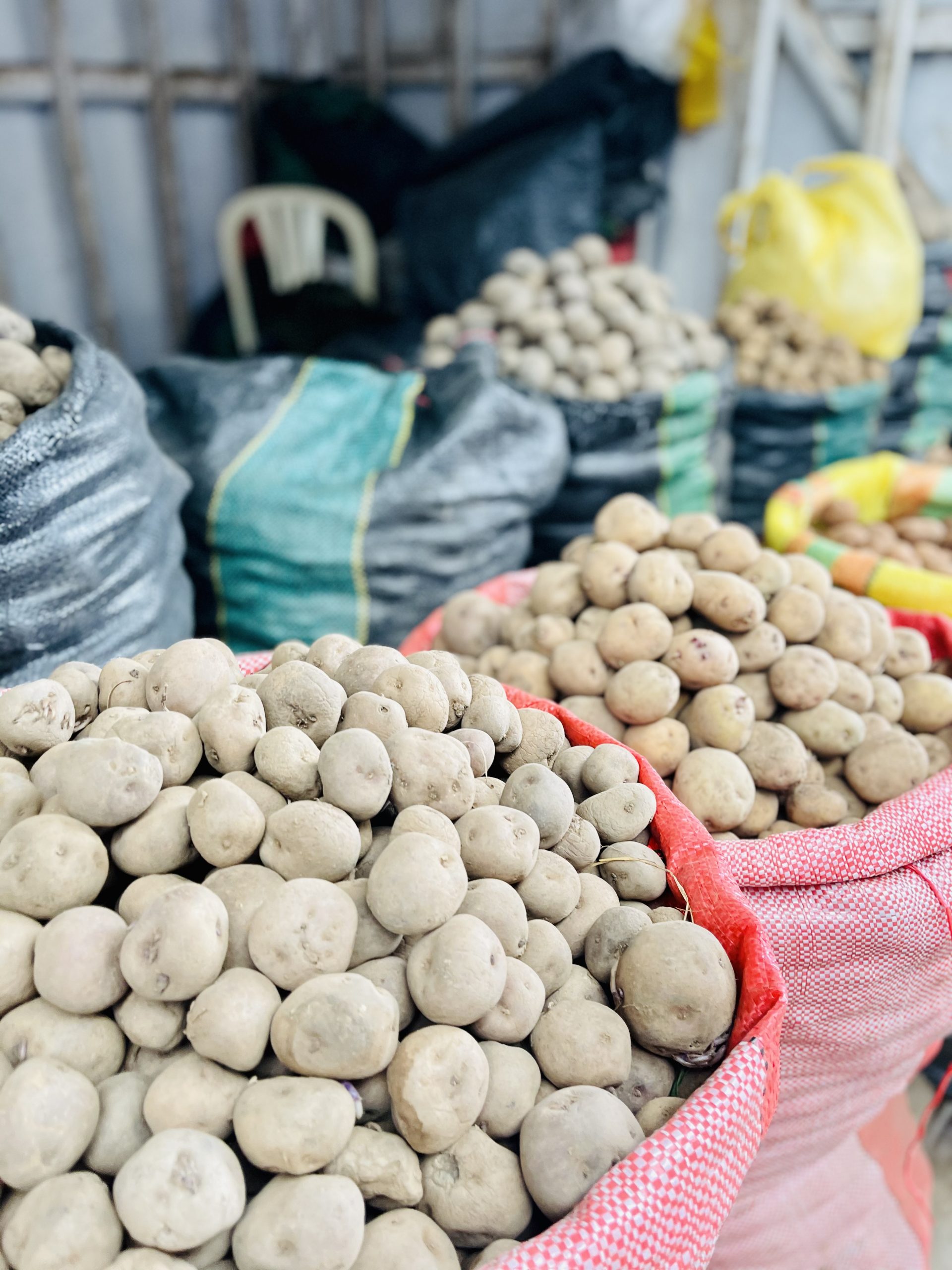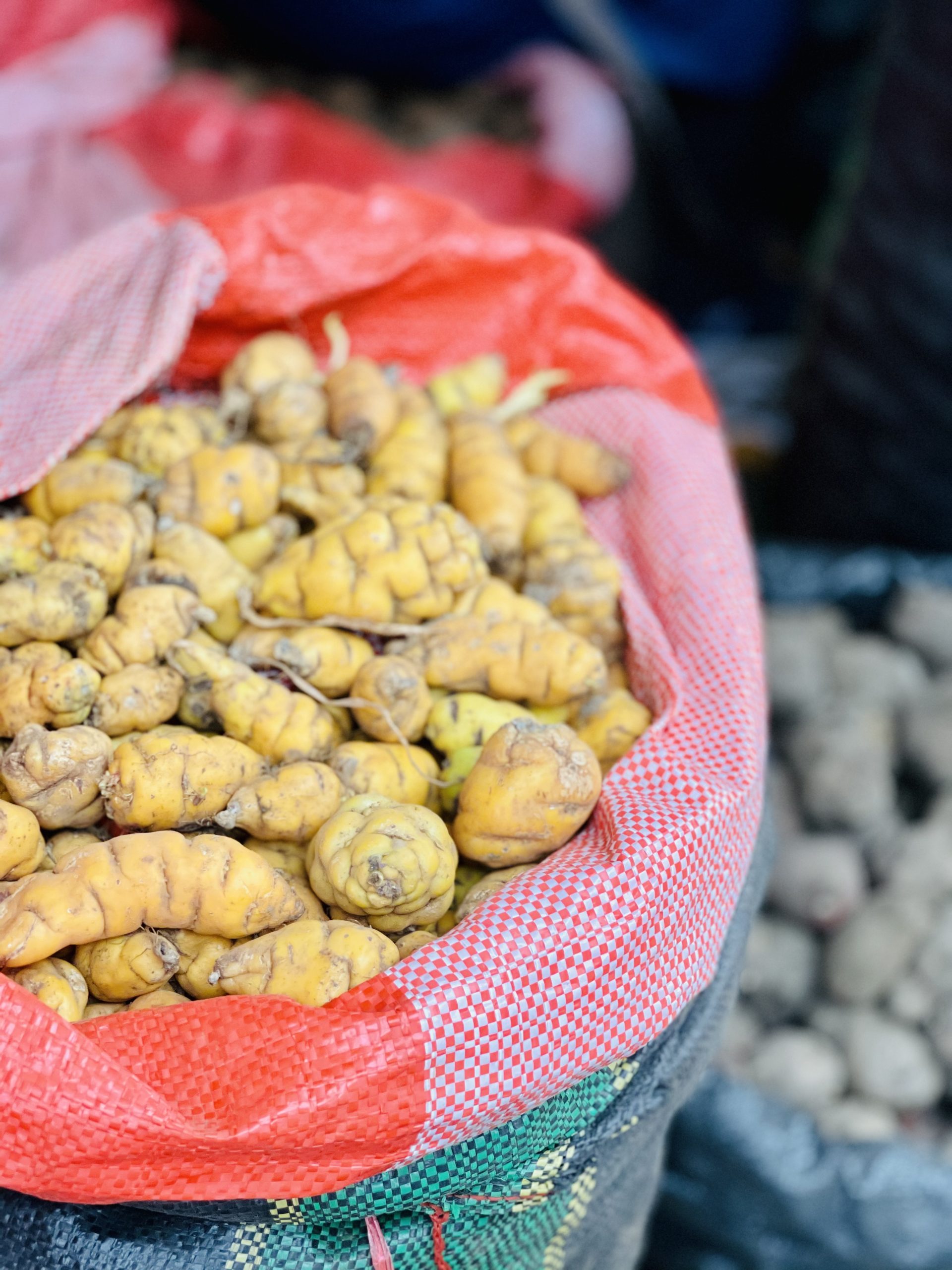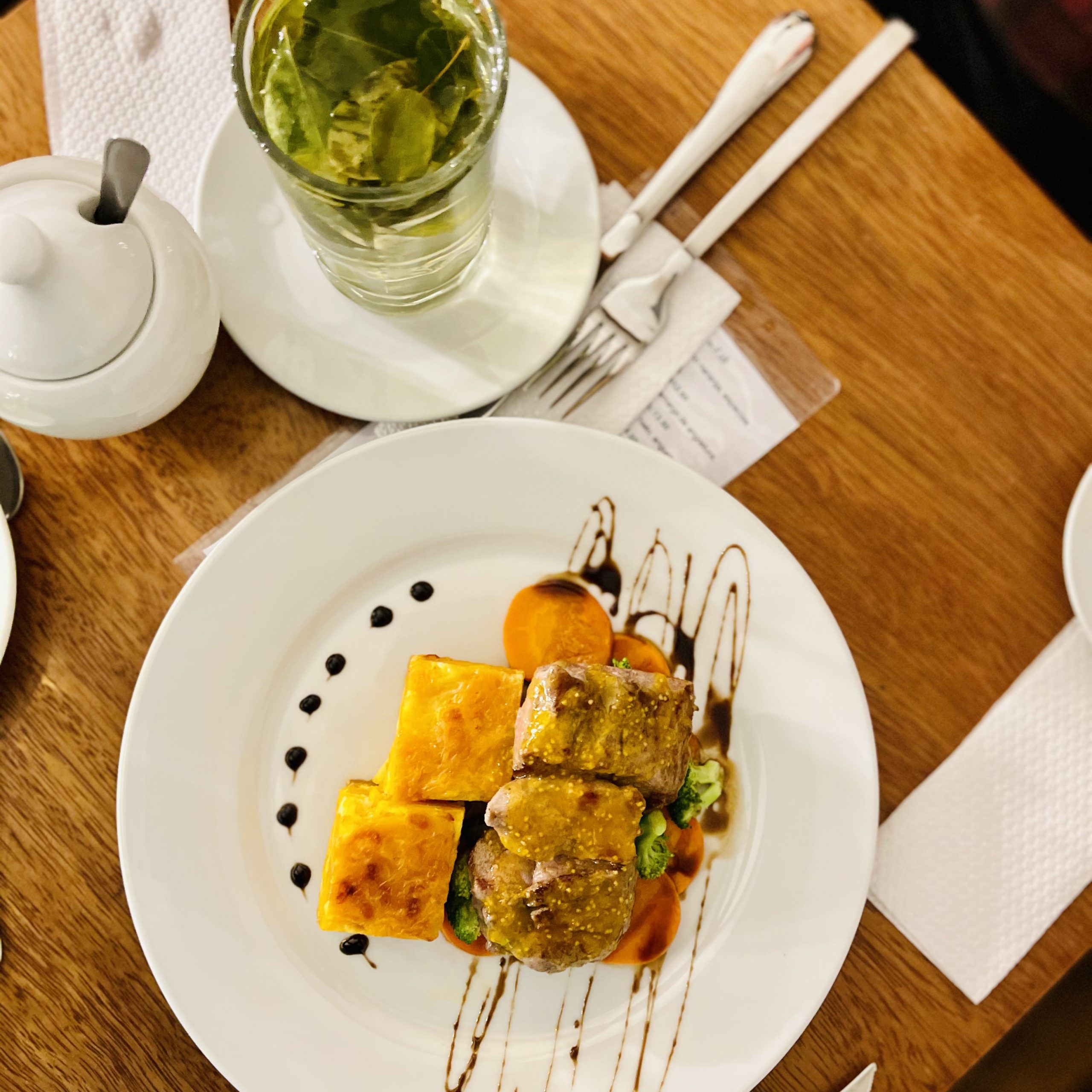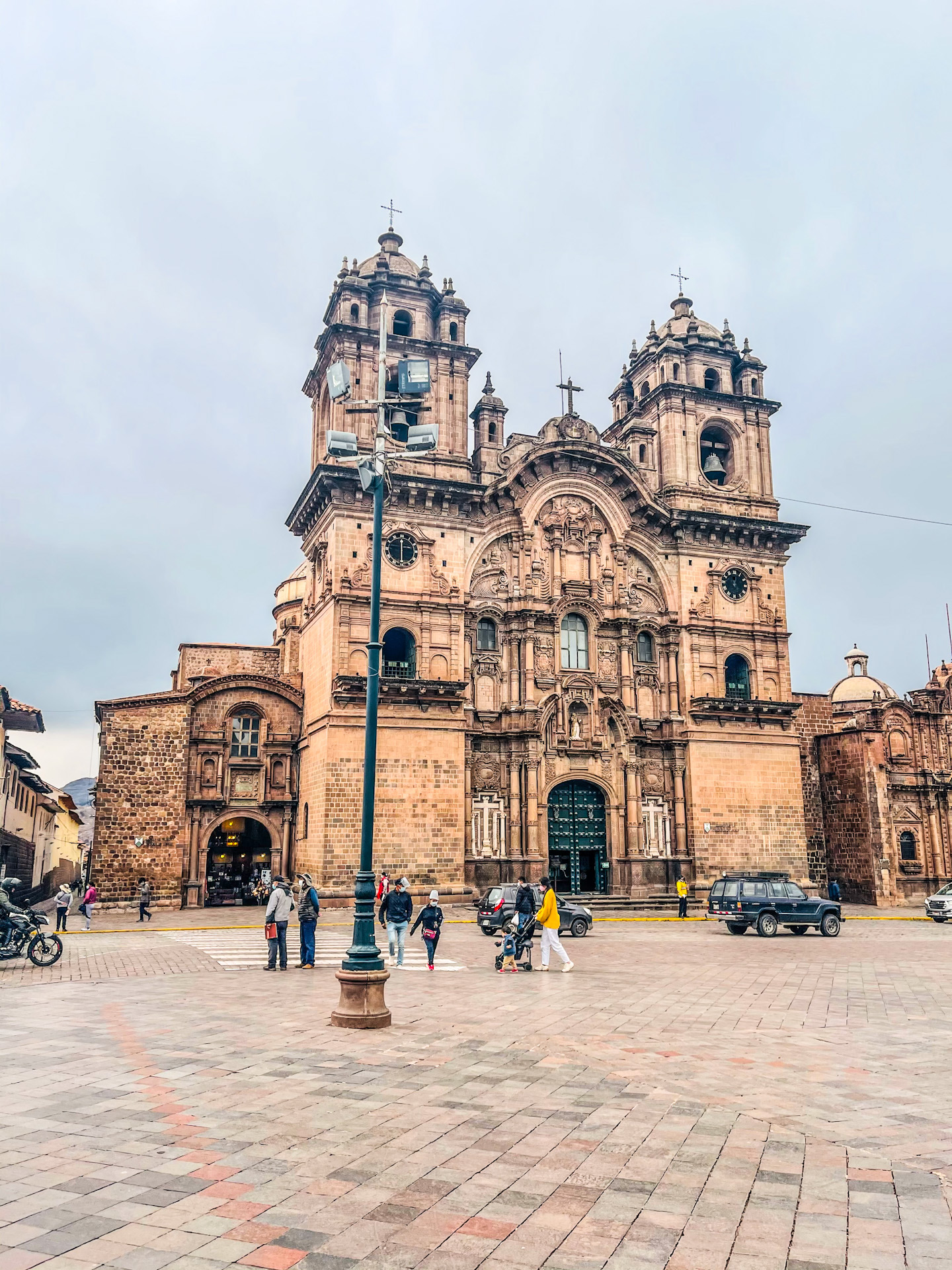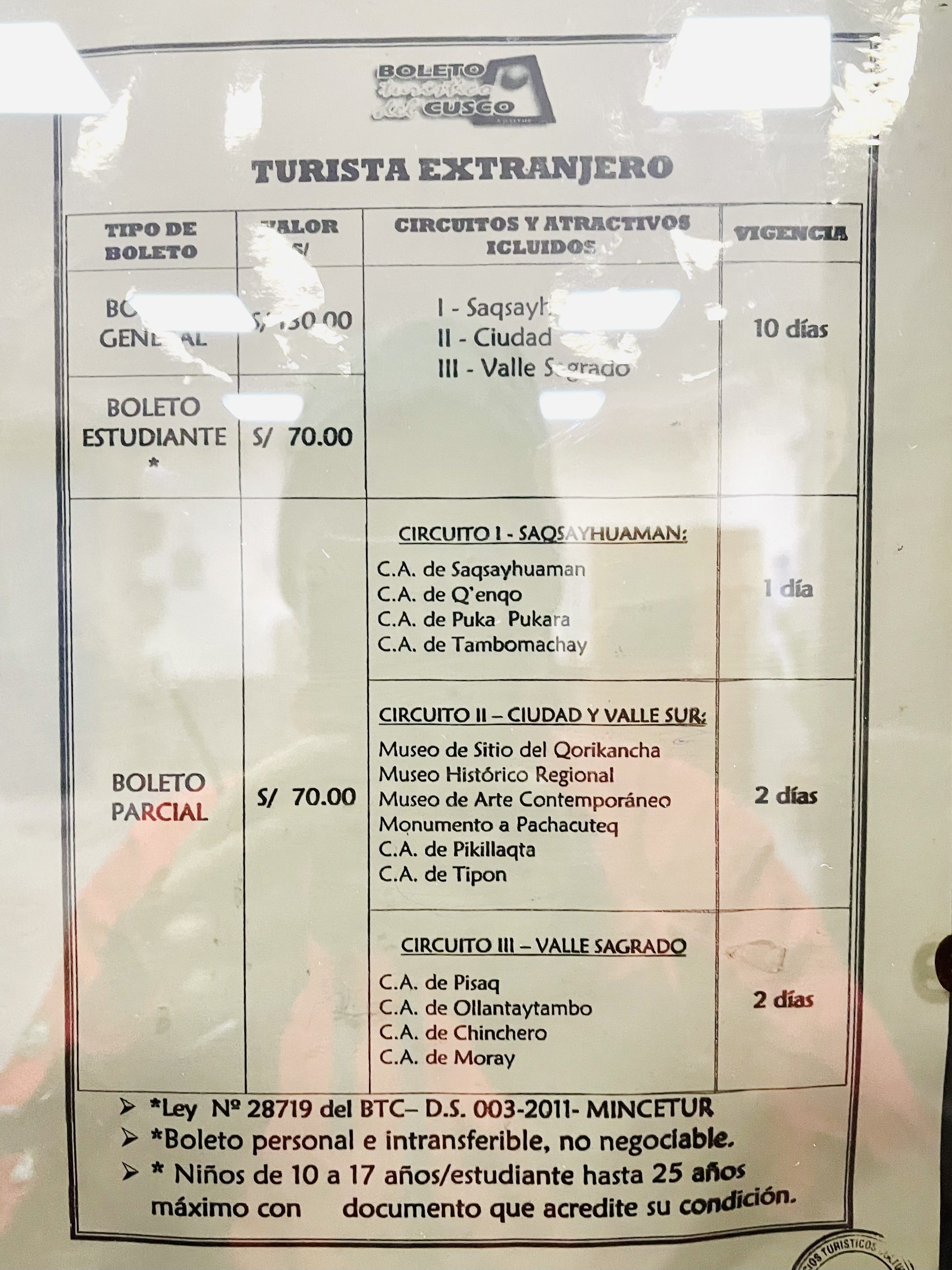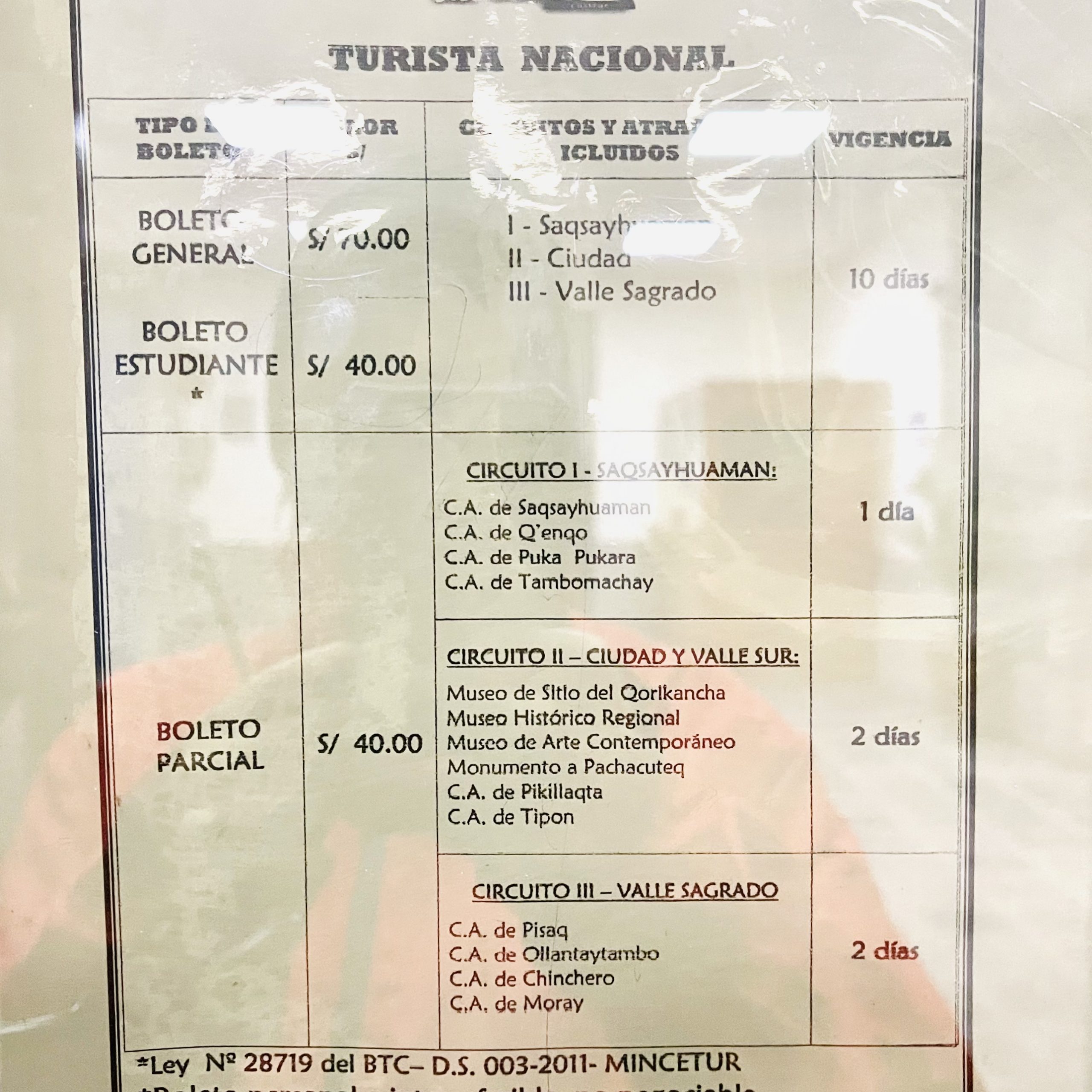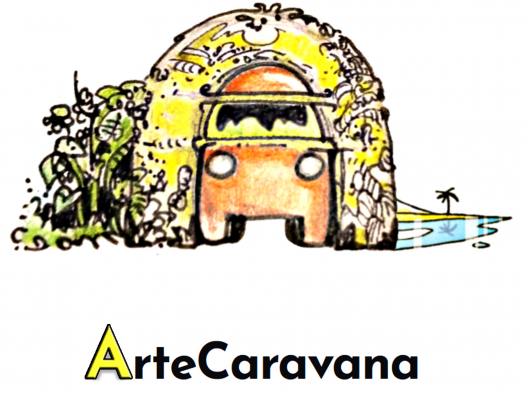
Leather handicraft straight from the workshop on four wheels
Wandering through Iberian lands
Cusco – what you must see and how to prepare for trekking
01/12/2021 6:11 PM
Cusco, guide, Peru, South America, travelling, travels .
Cusco, the former capital of the Inca Empire, one of the most important cities of the Viceroyalty of Peru (the Spanish colony founded in 1542), inscribed on the UNESCO World Heritage List, called the American Rome ... it is Cusco that attracts millions of tourists with its uniqueness. It seems to have stopped in time and while walking its narrow streets we feel as if we were breathing its centuries-old history.

Items of various nomadic tribes dating back more than 5,000 years have been found in the Cusco Valley (some of them can be admired at the Museum of Pre-Columbian Art). The first traces of settlements date back to 1000 BC. Around 1200 AD. Cusco became part of, and soon the capital, the Inca Empire - an empire that stretched from the south of Colombia, through central Chile to northwest Argentina. In 1532 Francisco Pizarro arrives in Cusco and this is how the period of Spanish rule begins. In 1542, the Viceroyalty of Peru is established and Cusco becomes the second most important city in the country after Lima. In 1821, Peru regains its independence, and in the meantime, there are many bloody uprisings, which unfortunately end in failure.
The colonial period is a time of change for the city of Cusco. Many temples are destroyed by invaders, and new buildings are erected in their place - for example, the Cathedral was built on the ruins of the Royal Palace of Vircacocha (Palacio Real del Inca Viracocha). The earthquake of 1650 leaves the city in ruins. The reconstruction is largely done in the colonial style.
Cusco is a unique city not only because of its tourist value, but above all because it has become a symbol of resistance. Despite the colonial pressure, the inhabitants of Cusco and the surrounding area never abandoned their traditions and they were passed down from generation to generation. When coming here, try to look a little deeper and allow yourself to immerse yourself in the amazing culture and history of this region.
How to get to Cusco
There is an airport in Cusco, so the easiest way is to come by plane. Flights from Europe are most often to Lima, from which we can fly really cheap to Cusco. If you prefer the land route or you are just on the road and visiting other regions of Peru, You have a network of bus connections at your disposal - you can easily get to Cusco by bus, be it from Nasca, Ica, Puno or even from Lima.
How to search for cheap accommodation
As we mentioned in the article about Peru, where we collected our insights and the most important practical information for you, in our opinion it is best to find accommodation through Booking.com. We chose the most economical option for 30 soles ($ 7.5) per night for two people in a private room with shared bathroom. Breakfast was included. We also recommend Couchsurfing, which we like to use, but in Cusco we were unable to find a host.
Another nice website for cheap accommodation is https://www.hostelworld.com/hostels
Altitude sickness - how to deal with it
Cusco is located at an altitude of 3,300 meters above sea level and most likely when you come here you will feel the effects of altitude sickness, which we also wrote about in the general article about Peru. The point is, there is less oxygen in the air at this altitude and your body has to get used to it and overproduce red blood cells so that they can transport oxygen better. That's why the first few days will be tough. Some acclimatize faster, others slower, but if you plan to go on any trek to the mountains, you must first spend a few days in Cusco until you feel better.
- drink a lot of water
- avoid alcohol
- move even when you are not feeling well - even a short walk around the city every day will allow you to acclimatize faster
- you can chew coca leaves or drink tea from these leaves (available at the market), also pills with coca leaves, guarana, mint and ginger are available at the pharmacy
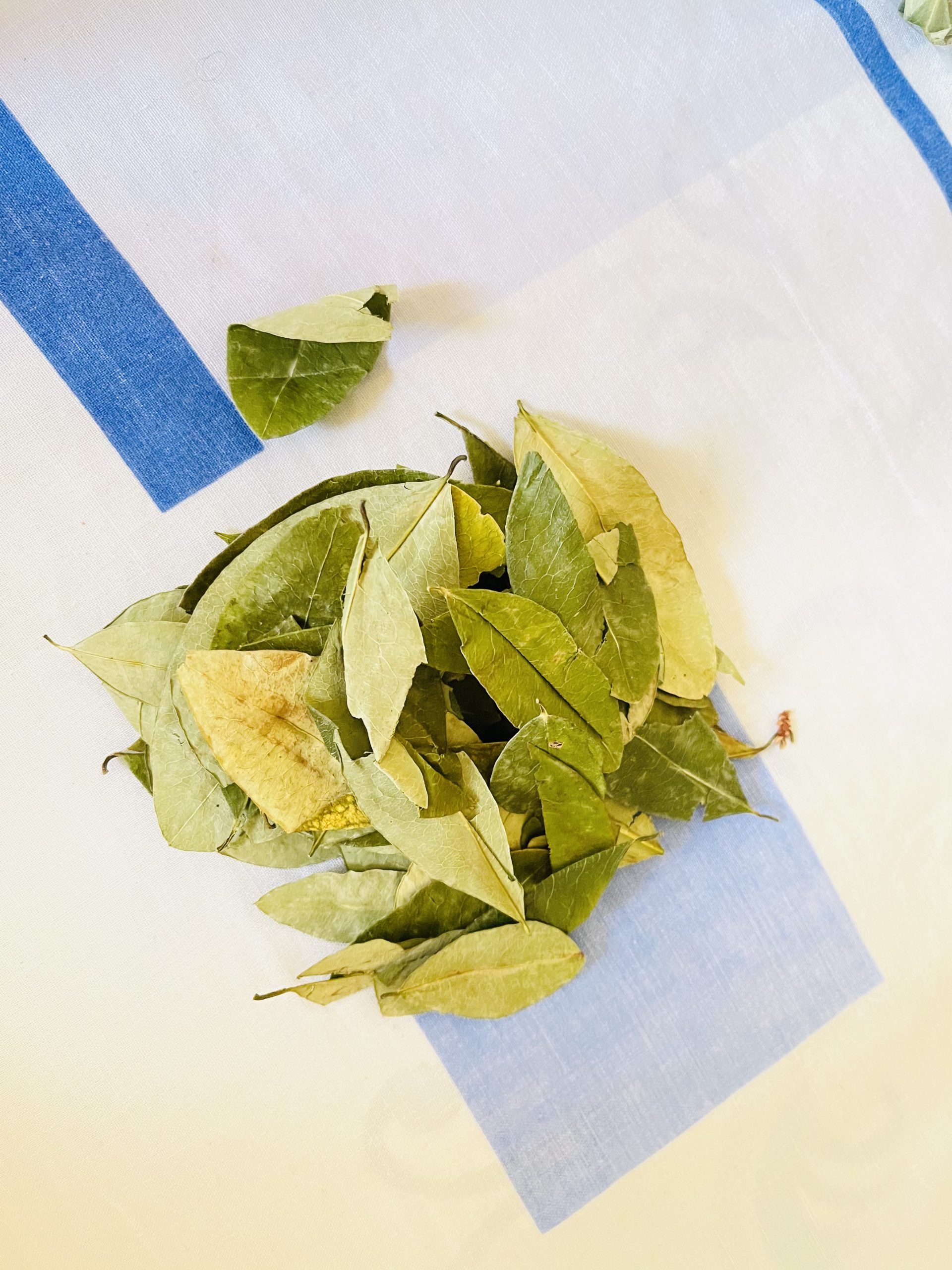
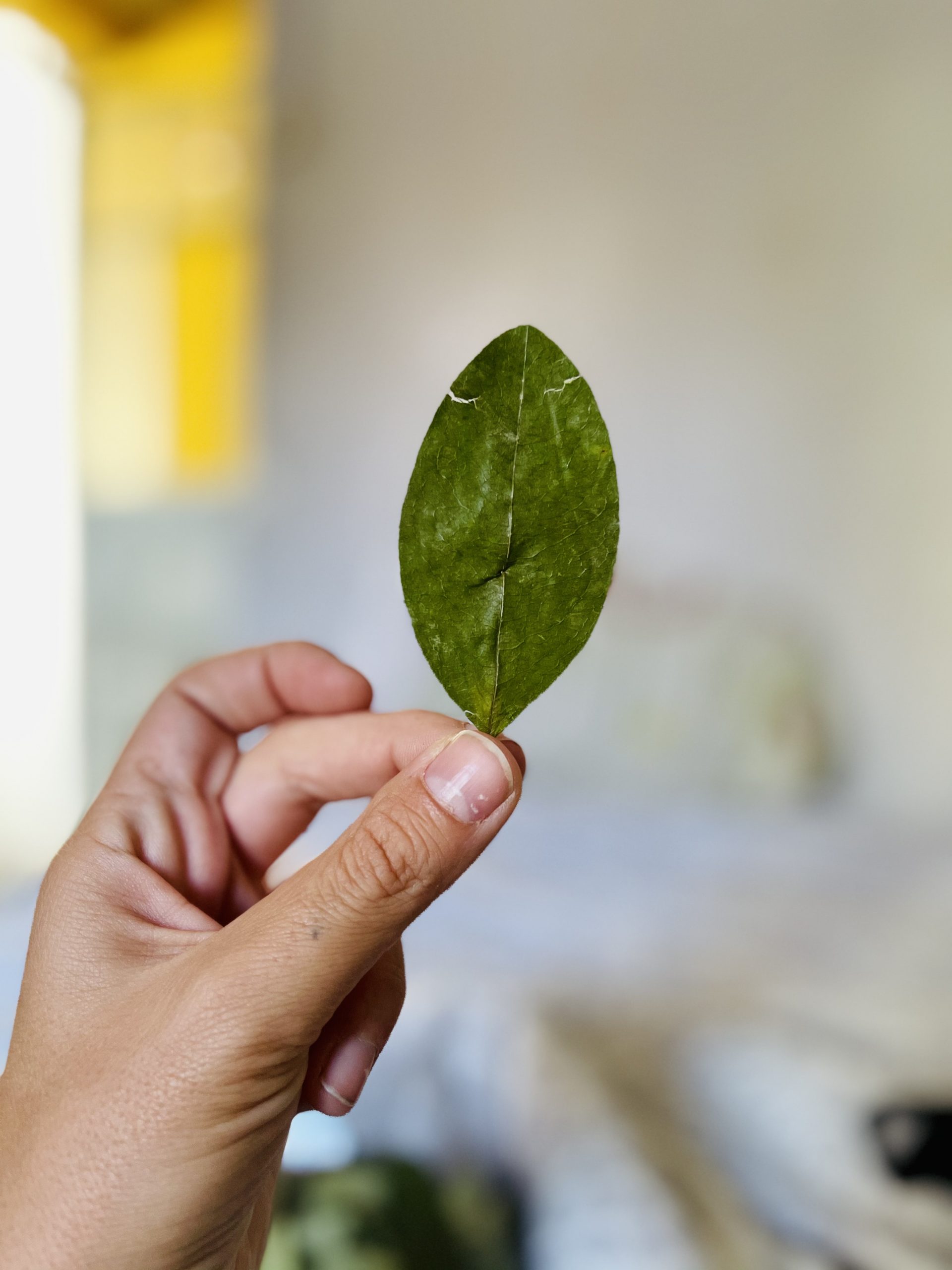

- if possible, increase the height gradually - instead of coming to Cusco right away, spend some time at a lower altitude
- a high-protein and high-calorie diet is recommended - eat plenty of meat, fruit and vegetables
Use sunscreenen
Due to the height, the air is thinned here, which protects us less from UV rays. Even on a cloudy day, you can get burned, so be sure to get a cream with a minimum SPF50 filter to even SPF90 (especially for the face) upon arrival. When going on any hikes or trekking, don't forget to take some cream with you and use it several times while walking.
Eat local Peruvian food
In Cusco, eating in local bars is so cheap that it is not profitable to cook or buy food in a supermarket. The menu del dia, i.e. soup and main course, is available for as little as 5 soles ($ 1.25). San Pedro market is the cheapest to eat, but if you are concerned about stomach problems, you can easily find a whole lot of places that also serve food at incredibly low prices. It is best to buy fruit and vegetables at the market, many other products (e.g. drinks) can be bought cheaper in a large supermarket than in local shops.

I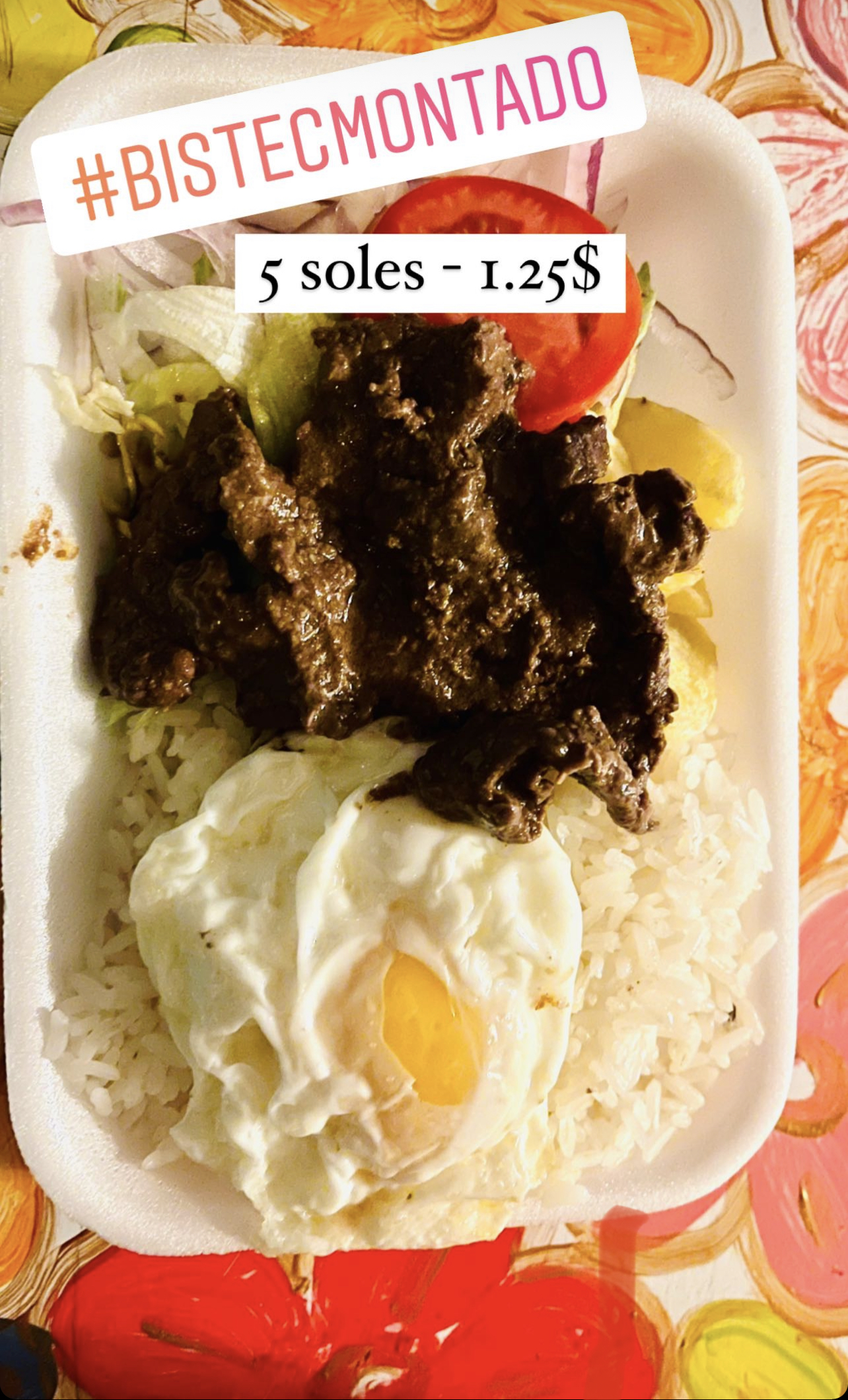
Visit a real vegetable market just outside the city
San Pedro is probably the most popular and cheapest market in Cusco and you will find everything you need there, but if you want to get away a bit from the tourist part of the city and see a real market where you will almost certainly not meet any foreigner, go to Vinocanchon. By colectivo (i.e. by minibus) for 1 sol from the center you will reach a huge market - there you will find fruit, vegetables, meat, cheese and much more, all local, good quality and at prices for the locals. It was there that I saw the famous thousands of types of Peruvian potatoes for the first time.
Mercado Vinocanchon
Take a picture of yourself with an alpaca
Alpacas and llamas are animals that we associate with Peru for a reason. Like their wild relatives, i.e. vicuñas and guanacos, they belong to the family of camelids living in South America, occurring naturally at altitudes above 3000m above sea level. In Cusco you will meet ladies dressed in traditional, regional costumes, who pose for a photo for a small fee. From my observations it appears that those who have lambs with them ask for “free donation” (in my opinion 2 soles for a photo is ok), while those who have llamas on a leash ask for 5 soles or more. Anyway, such a photo is of course a tourist must-have.
Relax & do not get angry
Peru, like every other country in the world, has been hard hit by the pandemic and its restrictions. Many people were left without work, home or livelihood. Now tourism is slowly coming back and of course everyone is trying to make ends meet, and in some places it is more noticeable - e.g. in Cusco. There is no option to sit quietly on a bench by Plaza De Armas or Plaza San Francisco because every 30 seconds someone comes up and tries to sell something - jewelry, paintings, razors, massage, a trip ... I know that it was the same before the pandemic but now the phenomenon has intensified. However, it is better to approach it with a smile - Peruvians are nice and not pushy like Tunisians or Moroccans - if we refuse, they will leave. Even if it is a five hundredth person who prevents you from reading a sentence in a book - keep calm, do not be nervous and say thanks with a smile on your face.
Visit a handicraft fair
Cusco is teeming with handicraft fairs. If you want to bring some typical souvenirs, your list should include a poncho, sweater, hat or gloves (or all) made of llama or alpaca wool, in the typical colors of Peru or the city of Cusco. Remember that real alpaca wool is a very flexible material and when buying a hat or a sweater it is worth paying attention to the stretchability of the material. If it seems stiff, we probably don't have the original llama or alpaca wool in our hands. We are constantly trying to find out where this handicraft is made and as soon as we get to the source, we will let you know. Either way, while in Cusco, don't miss the chance to visit the most important handicraft fair. Don't forget to bargain and remember the final prices are more or less the same everywhere. Unfortunately, not all the products you see for sale are handmade - many are machine made.
ARTESANIAS LLANCAQMAKI
Plan your trekking
Cusco is a great starting point for shorter or longer trips to the mountains. It is from here that we can go to the Sacred Valley of the Incas, Machu Picchu or a whole lot of different trekkings. About the trekkings, we will gradually add you various articles describing the routes, difficulty levels, ruins encountered along the way or practical tips. In today's text, we just wanted to draw your attention to the fact that a stay in Cusco is an ideal opportunity to acclimatize, fight altitude sickness and plan further stages of the trip. There are many trails of various difficulty levels relatively close - when you are in Cusco, you will have time to think about, for example, whether you are interested in an organized trip, trek on your own, whether you have the right equipment, and if not, whether you want to buy it or rent it, whether you prefer the most popular and most frequently chosen routes, or maybe you would like to see something obvious but equally beautiful that the mass tourist has no idea about. Use this time productively getting to know the city and its surroundings, getting acclimatized and planning what to do next - this way nothing will surprise you. Cusco is also a perfect place to do some shopping - it is here that it will be easier to buy or rent a tent, stove, gas cylinder.
Try the alpaca steak
A typical delicacy associated with Cusco is, of course, cuy or guinea pigs. For many, however, not only vegetarians or vegans, but also carnivores, eating it is too much of a challenge. Cusco, however, has a few other specialties to offer, including alpaca steak, which I heartily recommend. The price ranges from 20-50 soles. We ate for 23 and got such a beautifully served dish that I never expected something like this from this particular place, because it looked quite inconspicuous. The steak was perfectly done, topped with a delicious sauce and balsamic vinegar, served with a sweet potato cake, steamed cauliflower and carrots. So far, this is one of the best dishes I've had in my life. Respect for the cook, as he was undoubtedly an inspired cook. Below is a pin, where we ate this delicious dish.
Take a walk in the vicinity of Plaza De Armas
Plaza de Armas is the main square of Cusco. It is here that there are two most important monuments of the city - the Cathedral built in 1559 on the ruins of the Kiswarkancha temple and the Church of the Society of Jesus built by the Jesuits. In the square itself there is a statue of the Inca ruler Pachacuti. The Plaza de Armas has many streets and narrow cobblestone alleys that you must take a walk through. In addition to Plaza de Armas, the must-see when visiting Cusco is the San Blas district and the Lorento street, with the famous stone with 12 angles.
Drink a cold cusqueña
There is a Cusqueña brewery in Cusco, founded in 1908. There is no option to come to Cusco and not try one of the four flavors of Cusqueña beer. We can choose from: Dorada (classic), Trigo (wheat), Negra (dark), Roja (a mixture of various malts), Doble Malta (Pilsner and Munich malts). A cold beer will be the perfect culmination of a long day full of excitement!
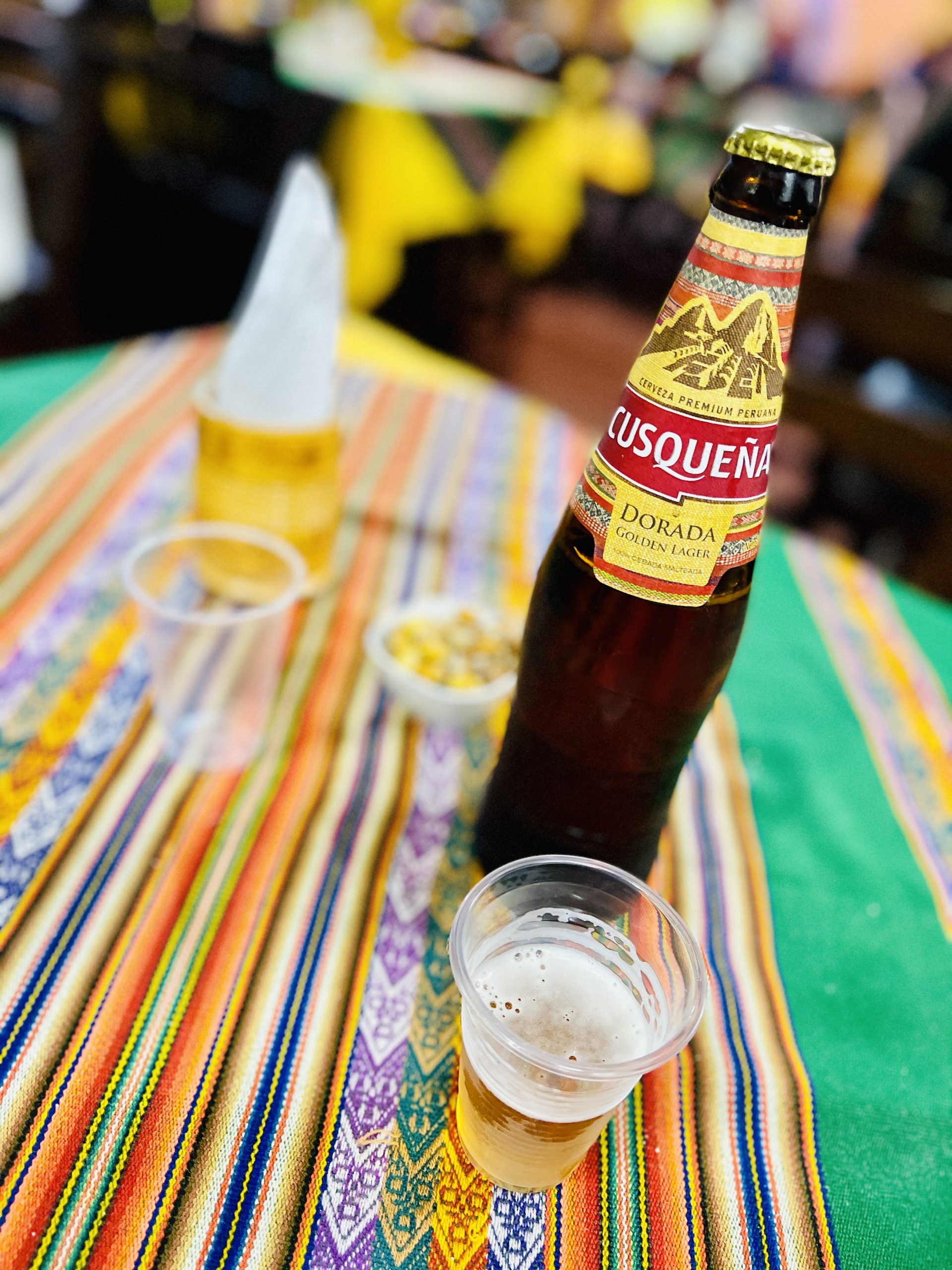
Cusco museums and boletos turisticos
In Cusco and its vicinity, we have a choice of various free attractions, but also paid ones. Most of the paid attractions are grouped and it is not possible (most often) to buy an individual ticket - you have to buy the so-called boleto turístico, a ticket that will allow us to visit several tourist attractions. The prices are fixed in advance and it is not possible to bargain. Types of boleto turistico:
- INTEGRAL - valid for 10 days, allows you to see 16 tourist attractions, costs 130 soles (about 32 €), 70 soles for students (only with a valid document and up to 25 years of age). It also costs 70 sols for Peruvians and 40 soles for students from Peru.
Places we can visit:
- Museums in Cusco: El Museo Municipal de Arte Contemporáneo (Contemporary Art Museum), Museo Histórico Regional (Region History Museum), el Museo de Arte Popular (Popular Art Museum), Centro Qosqo de Arte Nativo (The Cusco Center of Native Art) and Museo de Sitio de Qoricancha (Musuem Qoricancha)
- Ruins and archaeological sites: Moray, Chinchero, Ollantaytambo, Pisac, Tambomachay, Qenqo, Puca Pucara, Saqsayhuamán, Tipón, Piquillacta and Monumento Pachacutec (most of them are not in Cusco, so plan your visit well).
If we are not planning such a long stay in Cusco, you have a limited budget or you are simply not interested in all these attractions, you may be tempted by "partial" tickets. That is, instead of buying one ticket for all attractions, we can choose one of the three boleto turístico parcial options. The price for foreigners and Peruvians is the same, so for the locals it doesn’t make sense to buy the parcial one. One boleto turístico parcial costs 70 soles (approx. 16 €) and 40 soles for students (with valid documents and up to 25 years of age).
We have three options to choose from
- FIRST OPTION SAQSAYHUAMÁN (valid for 1 day) includes Qenqo, Puca Pucara, Saqsayhuamán and Tambomachay. All attractions are located in Cusco itself and you can visit them all on foot in one day or go to Tambomachay with a colectivo (public transport) saving about 8km of walking. If you want to do a guided tour, ask at travel agencies in Cusco - they often offer a guide and transport to all attractions for a small surcharge.
- OPTION TWO - CITY AND SOUTH VALLEY (valid for 2 days) Museums in Cusco: El Museo Municipal de Arte Contemporáneo (Contemporary Art Museum), Museo Histórico Regional (Refion History Museum), el Museo de Arte Popular (Popular Art Museum), Centro Qosqo de Arte Nativo (Center for Indigenous Arts, Museo de Sitio de Qoricancha (Musuem Qoricancha), Monumento al Inca Pachacutec and the archaeological site of Tipón and Piquillacta.
This is an option for museum fans.
- OPTION THIRD HOLY INCA VALLEY (valid for 2 days) ruins and archaeological site: Chinchero, Moray, Ollantaytambo y Piscac. As these places are very distant from each other, if you do not want to organize a trip on your own, you can also use the services of a travel agency, which will organize a guide and transport for an additional fee. Remember that they often add salt mines in Maras (Salineras De Maras) with this option, the entrance to which is not included in the price (10 soles)
If you can only choose one option, we suggest the third one.
Where to buy boletos turisticos? In Oficina Central, which is located in Plaza de Armas, on Avenida El Sol 103, Monday to Sunday from 8:00 am to 6:00 pm. Tickets can also be purchased at most attractions that are included in them, excluding the Museum of Contemporary Art (Museo de Arte Contemporáneo) and Monumento de Pachacutec. Unlike Machu Picchu, there are no restrictions here and there is no need, or even possibility, to book tickets in advance.
See the city from above
Be sure to go to a viewpoint from which you can admire the city from above. I went to the church of St. Christopher (Iglesia de San Cristóbal) and then around the Saqsaywaman ruins. Believe me, it's worth seeing Cusco from this perspective!
